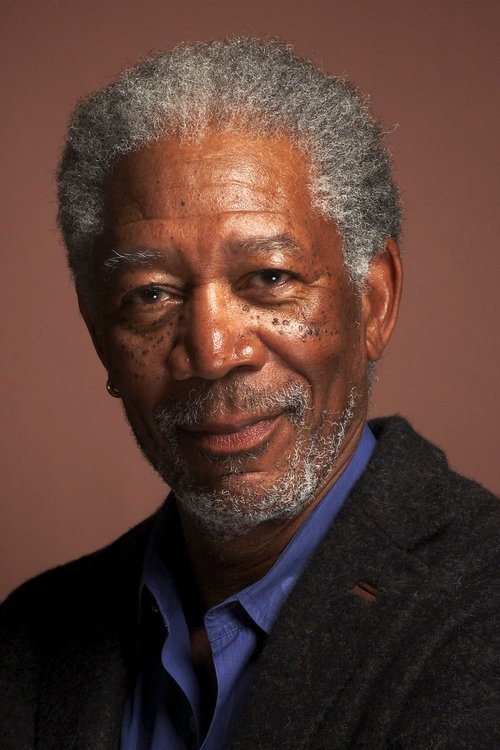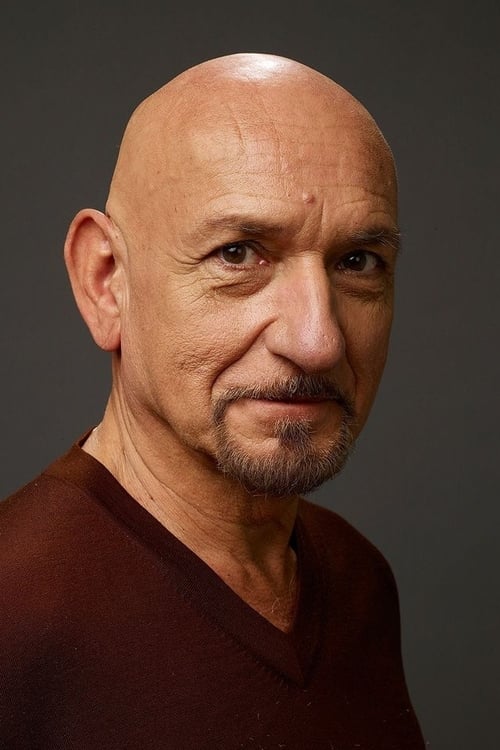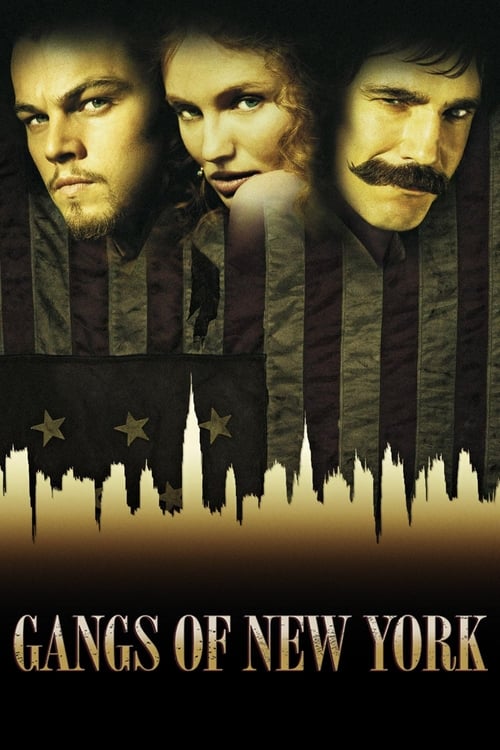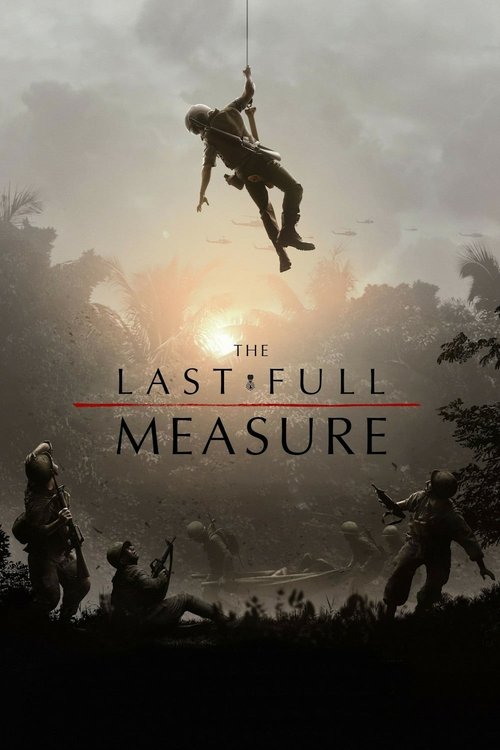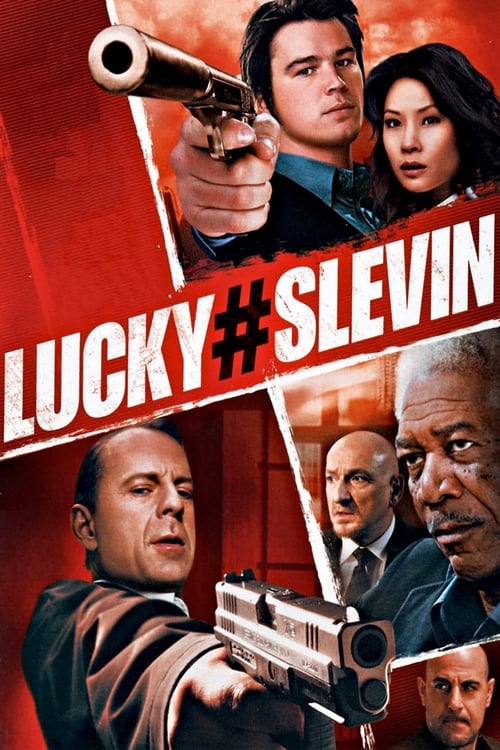
Lucky Number Slevin
Slevin is mistakenly put in the middle of a personal war between the city’s biggest criminal bosses. Under constant watch, Slevin must try not to get killed by an infamous assassin and come up with an idea of how to get out of his current dilemma.
Dialogues from Movie Lucky Number Slevin
Quotes from Movie Lucky Number Slevin
Sound Tracks from Lucky Number Slevin by J. Ralph
Killing Moon
Killing Moon by Echo & the Bunnymen, Played during a pivotal scene
In the Night
In the Night by The Stills, Used in a montage
Let Me In
Let Me In by Dawn Landes, Background during a key moment
Download App
Memorable Scenes from Movie Lucky Number Slevin
The Mistaken Identity
Slevin Kelevra gets mistaken for a hitman, starting a series of unfortunate events. This moment sets up the entire plot as we see Slevin try to navigate a world of crime—he's just an innocent man caught in a web of lies. The tension rises as he realizes he’s in over his head when the crime bosses confront him. His calm demeanor contrasts sharply with the dangerous situation he faces, raising the stakes dramatically.
Context: Slevin arrives in a new city to escape his past, only to be pulled into a conflict between two rival crime families due to a case of mistaken identity.
The Coin Toss
In a tense moment, we witness a brutal decision dictated by a coin toss. This scene has a raw intensity as it highlights the ruthless nature of the criminals involved while also showcasing Slevin’s growing involvement in their world. As the coin flips in the air, the audience holds their breath, unsure of the fate that awaits.
Context: Slevin has already gotten entangled with the mob and is beginning to understand the severity of his situation, highlighting the unpredictability of life.
Slevin Meets Lindsey
The chemistry sparks between Slevin and Lindsey when they meet in the apartment. This scene is lighthearted amidst the chaos, showcasing a moment of normalcy and connection. The flirtatious banter and shared laughter provide a brief escape from Slevin’s troubles, illustrating the human need for companionship in dire times.
Context: Lindsey is drawn to Slevin despite the tension surrounding him, adding layers to his character as we see a softer side to him.
The Elevator Showdown
A tense confrontation occurs in an elevator where Slevin’s fate hangs in the balance. The confined space heightens the pressure as the characters exchange sharp dialogue, revealing their motives and intentions. The silence and subtle movements are as telling as the words spoken, adding to the suspense.
Context: This moment underscores Slevin’s isolation and danger as he faces potential threats from every side, making his struggle relatable.
Slevin’s Backstory
A compelling reveal about Slevin’s past unfolds, explaining why he is on the run. The emotional weight of this moment deepens the audience’s understanding of Slevin’s motivations and fears. Through flashbacks, we see his journey, transforming him from a simple man into a layered character dealing with loss.
Context: This moment helps connect Slevin's present decisions to his troubled past, illustrating the film’s theme of identity and consequences.
The Final Revelation
In a nail-biting climax, all threads of the story come together. The shocking truth about Slevin’s identity and plans is revealed in a masterfully crafted sequence that takes viewers by surprise. The emotional climax showcases Slevin’s ultimate gamble, blending tension with a powerful twist as everything changes.
Context: As the last pieces fall into place, this climax ties the narrative threads together, revealing the true nature of Slevin’s character.
Slevin’s Escape
Slevin executes his plan to escape his pursuers in a dazzling and cleverly orchestrated sequence. The visual storytelling here emphasizes tension and smart tactics. The stakes are high, with life-or-death scenarios playing out. Each move is calculated, showcasing Slevin’s cleverness and determination to claim his own destiny.
Context: Having learned from his experiences, Slevin takes command of his fate during this pulse-pounding escape, showing character growth.
The Emotional Goodbye
In a heart-wrenching moment, Slevin says goodbye to Lindsey. It’s filled with aching sincerity and vulnerability. The dialogue carries weight as they recognize the impossibility of their situation while still expressing genuine feelings for each other. This moment highlights the theme of love overshadowed by turmoil.
Context: Slevin’s choices may lead him away from relationships, intensifying the emotional stakes of their connection.
The Mob Bosses’ Confrontation
When Slevin faces the two mob bosses, the tension reaches an all-time high. Their rivalry and Slevin’s unyielding demeanor create a palpable atmosphere filled with dread and intrigue. Each word exchanged is loaded with subtext, revealing the power dynamics at play.
Context: Slevin is caught in the crossfire of two dangerous forces, making this scene a key turning point in the narrative.
The Twist Ending
The film concludes with a surprising twist that flips everything viewers thought they knew. As the narrative comes full circle, the final moments reveal deeper implications about fate and choice. The reaction of the characters in the aftermath deepens the impact of this twist.
Context: This ending crystallizes the film’s overarching message about the unpredictability of life, leaving viewers stunned and reflective.
Slevin’s Moral Dilemma
A pivotal moment arises when Slevin must choose between revenge and letting go. The internal conflict is palpable and relatable, as he weighs his options. The cinematic tension is mirrored by the emotional struggle on display, captivating audiences as they relate to Slevin's plight.
Context: This moment reinforces the theme of morality and the choices one makes in dire situations.
The Unlikely Ally
The introduction of Slevin’s unlikely ally adds a layer of intrigue. Their unexpected partnership creates a new dimension in the story, filled with tension and humor. The chemistry between them raises the stakes and provides relief from darker moments.
Context: This alliance is crucial in propelling Slevin’s journey forward, showcasing themes of friendship and loyalty.
The Chase Sequence
A thrilling chase scene unveils Slevin’s quick thinking and agility. The cinematography captures the frenetic energy, pulling viewers into the moment. It’s a visually stunning sequence that illustrates the danger surrounding him while keeping audiences at the edge of their seats.
Context: As Slevin flees from danger, viewers experience his adrenaline and fear firsthand, connecting them to his plight.
The Heartfelt Confession
An intimate moment occurs when Slevin and Lindsey share their fears and secrets. The dialogue reflects vulnerability and creates emotional depth. Here, we see their connection strengthen, and it reveals personal truths that resonate with viewers.
Context: This confession adds layers to both characters and emphasizes the human experience amid chaos.
The Betrayal
A shocking betrayal occurs when a trusted character turns against Slevin. The dramatic weight of this moment is incredible, as it plays into the theme of trust and deception. The audience is left reeling as the stakes are raised even higher.
Context: This betrayal alters the direction of the plot and tests Slevin's resilience.
The Escape Plan
Slevin meticulously lays out his escape plan, filled with clever strategies and unexpected turns. The focus on his intellect engages the audience, highlighting his growth from victim to strategist. The tension builds as he prepares for the final showdown.
Context: This planning scene demonstrates Slevin's development and prepares viewers for the thrilling climax ahead.
The Heart of the Story
A poignant moment reflects on the film's core themes: identity, fate, and choice. The characters’ dialogues reveal their struggles and desires, resonating deeply with viewers. This scene encapsulates the emotional journey the audience has taken.
Context: This reflective moment serves as a reminder of the film's weighty themes while showcasing the emotional stakes.
The Final Confrontation
The final confrontation between Slevin and the mob bosses packs emotional and narrative punch. The stakes are astronomical, culminating in a powerful exchange that leaves the audience breathless. Each character's motives are laid bare, capturing the themes of vengeance and justice.
Context: This scene serves as the climax of Slevin’s journey, bringing together all narrative threads into a satisfying resolution.
The Moment of Hope
In a brief, stirring moment, Slevin reflects on hope despite the chaos surrounding him. It's a powerful scene that resonates with the audience, imparting a sense of resilience. The backdrop serves to underscore this fleeting moment of optimism.
Context: This moment highlights the enduring human spirit, contrasting sharply with the grim circumstances faced by Slevin.
The Unexpected Revelation
An unexpected revelation comes to light, changing everything Slevin thought he knew. The dramatic irony and twist leave viewers in awe, reflecting on how layers of truth and deception weave through the narrative.
Context: This moment emphasizes the unpredictable nature of Slevin’s journey and enhances the complexity of the plot.
The Closing Scene
The movie ends with a powerful closing scene that encapsulates the journey. Slevin’s final choice resonates deeply, leaving audiences reflective and engaged with the film's themes long after the credits roll. It’s both satisfying and haunting, reminding us of the paths we choose.
Context: This scene encompasses the essence of the film, bringing Slevin’s arc to a thought-provoking conclusion.
The Sacrifice
In a heart-wrenching moment, a character makes a significant sacrifice for Slevin. The emotional gravity of this action showcases love, loyalty, and the pain of loss. This scene emphasizes the risks involved in Slevin’s life and the weight of relationships amidst chaos.
Context: This sacrifice highlights themes of loyalty and the real cost of survival in a ruthless world.
The Moment of Truth
It's the moment where Slevin faces the truth about himself and his actions. The emotional impact resonates deeply, as we see him accepting his reality. The power of this moment showcases character growth and introspection.
Context: This scene accentuates Slevin’s internal struggle as he grapples with his choices, reinforcing the film's themes.
The Unexpected Alliance
An unexpected alliance forms when Slevin joins forces with someone he thought was an enemy. The tension balances with humor, making it a memorable moment filled with warmth. This alliance shifts the narrative and adds new dynamics to Slevin's character arc.
Context: This new partnership emphasizes themes of trust and redemption, showcasing the unexpected bonds formed in tumultuous times.
The Tense Standoff
The standoff between Slevin and his adversaries radiates tension and anticipation. Every moment feels loaded, adding to the suspense. The cinematography and direction enhance the gravity of the situation, reflecting the themes of power and helplessness.
Context: This standoff serves as a critical turning point where Slevin must confront his fears and decisions.
Download App


